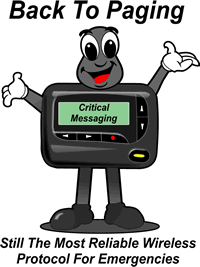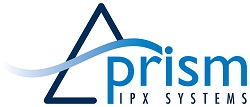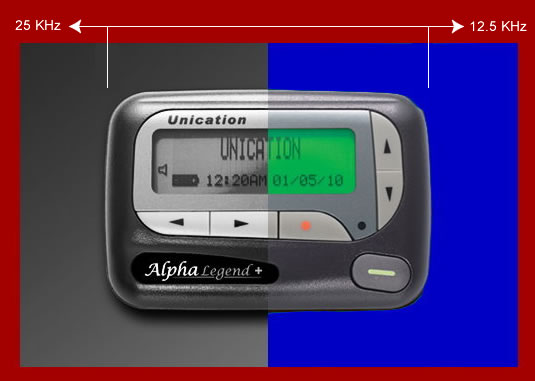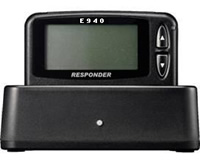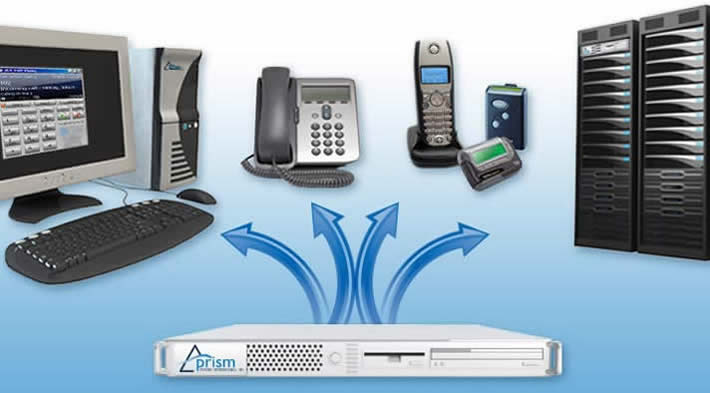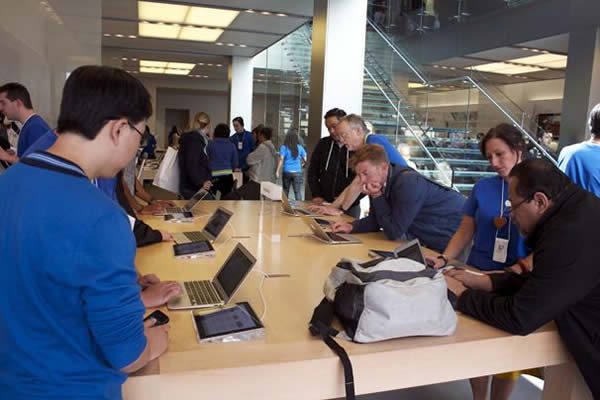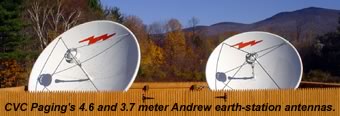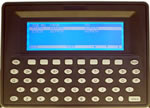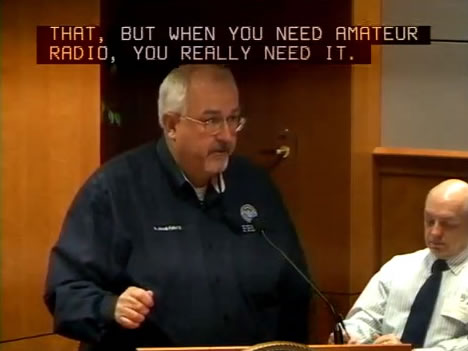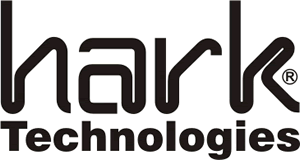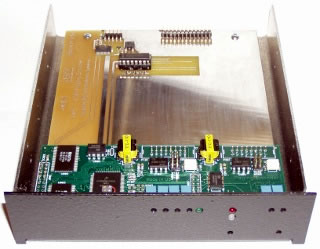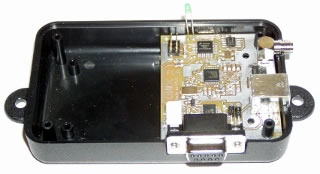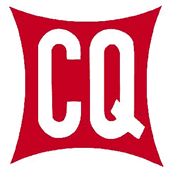
BloostonLaw Telecom Update Published by the Law Offices of Blooston, Mordkofsky, Dickens, Duffy & Prendergast, LLP [Portions reproduced here with the firm's permission.] www.bloostonlaw.com |
| Vol. 14, No. 21 | May 25, 2011 |

FCC Tentative Meeting Agenda For June 9 The FCC has announced that the following items will be on the tentative agenda for the next open meeting scheduled for June 9: - Electronic Tariff Filing System Report and Order: The FCC will consider a Report and Order that enables all carriers that file tariffs to do so electronically, thereby streamlining their filing processes while also making tariff information more readily accessible to other carriers and the public.
- Wider Channel Bandwidths FNPRM: An FNPRM seeking comment on a proposal which may permit operators to use spectrum more efficiently by enabling the use of wider channel bandwidths for the provision of broadband services in the Broadband Radio Service (BRS) and the Educational Broadband Service (EBS).
- Space Path Interference Report and Order: The FCC will consider a Second Report and Order adopting technical rules to mitigate space path interference between the 17/24 GHz Broadcasting-Satellite Service (BSS) space stations and current and future Direct Broadcasting Service (DBS) space stations that operate in the same band.
- Maritime Automatic Identification Systems Order: A Memorandum Opinion and Order considering a petition for reconsideration of the deadline by which VHF Public Coast (VPC) licensees must vacate Channel 87B following its re-designation for the exclusive use of Automatic Identification Systems and to modify the VPC frequency band.
BloostonLaw contacts: Hal Mordkofsky, Ben Dickens, Gerry Duffy, and John Prendergast. |

INSIDE THIS ISSUE - FCC’s Spectrum Task Force seeks comments on fixed, mobile 2 GHz band issues.
- USAC asked to develop proposal for disbursing Lifeline support to ETCs.
- FCC announces FY2011 NANP fund estimate and contribution factor.
- AT&T seeks approval of assigning 700 MHz licenses from Qualcomm, 700 MHz LLC, and Knology; FCC wants NRUF, LPN data in record for Qualcomm proposal.
|
FCC’s Spectrum Task Force Seeks Comment On AWS, Satellite Spectrum The FCC’s Spectrum Task Force has issued a Public Notice inviting “technical input” on approaches to encourage the growth of terrestrial mobile broadband services in the 2 GHz spectrum range that is allocated for fixed and mobile use. The Task Force seeks information on developing a cohesive approach that maximizes the terrestrial mobile broadband potential of this spectrum. Specifically, commenters should focus on bands co-allocated for Mobile Satellite Service (MSS) at 2000-2020 MHz and 2180-2200 MHz (“2 GHz MSS band” or “S Band”), as well as bands, or portions of bands, designated for Advanced Wireless Service (AWS), including: AWS-2 upper “H” block spectrum at 1995-2000 MHz; AWS-2 paired “J” block spectrum at 2020-2025 MHz and 2175-2180 MHz; and AWS-3 spectrum at 2155-2175 MHz. The Task Force noted that the National Broadband Plan recommended both that the Commission “resolve the future of the spectrum already allocated for AWS,” and that the Commission add a primary Mobile allocation to the 2 GHz MSS band “to provide the option of flexibility to licensees to provide stand-alone terrestrial services using the spectrum.” In July 2010, in the MSS NPRM the Commission proposed to add co-primary Fixed and Mobile allocations to one specific MSS spectrum band—the 2 GHz MSS band at 2000-2020 MHz and 2180-2200 MHz—and in the MSS NOI it sought comment on potential synergies among these bands. In April 2011, the Commission adopted the 2 GHz Band Co-Allocation Order in which it added co-primary Fixed and Mobile allocations to the 2 GHz MSS band, thereby “lay[ing] the groundwork for more flexible use of the band, including for terrestrial broadband services.” In so doing, the Commission also stated its intention to issue a follow up notice of proposed rulemaking on subjects raised in the MSS NOI, and its expectation that “staff will take advantage of industry technical expertise as it develops options, which may include potential synergies with neighboring bands, to inform [the Commission’s] decision making process.” Additionally, several commenters to the MSS NOI proposed integrating, to varying degrees, AWS and 2 GHz MSS spectrum as the Commission encourages deployment of terrestrial mobile broadband services in this spectrum. Moreover, the Commission has previously recognized the benefit that integrating terrestrial use of 2 GHz MSS and AWS spectrum could have for these terrestrial services, in particular, by allowing for sufficient economies of scale to support equipment design. The Task Force seeks information on band plans that could increase opportunities for successful use of 2 GHz spectrum for terrestrial mobile broadband. Examples include (1) 2000-2020 MHz/2180-2200 MHz; (2) 2000-2025 MHz/2175-2200 MHz; and (3) 1995-2200 MHz/2170-2200 MHz. The Task Force encourages comment on these three potential 2 GHz terrestrial spectrum concepts, and to suggest other possibilities as well. The Task Force requests that filers explain how band plan concepts may relate to other potential options involving 2 GHz spectrum or other nearby bands. For example, the Commission has designated the 1995-2000 MHz “H” block spectrum for pairing with spectrum at 1915-1920 MHz. Additionally, although the Commission has not proposed to pair AWS-3 spectrum with another unassigned band, the FCC Spectrum Task Force earlier sought comment on two bands identified by NTIA as potential pairing candidates. To what extent are possible terrestrial 2 GHz band plans consistent with these or other allocation options? Which approach will maximize the overall value of various affected bands for terrestrial mobile broadband? The Task Force also encourages discussion of other technical matters related to possible terrestrial 2 GHz band plans. For example, for any particular band plan should certain spectrum be paired? Should spectrum be designated for uplink use (mobile radio to base station transmission) and downlink use (base station to mobile radio transmission)? For any particular band plan, what uplink/downlink scheme would maximize economies of scale, particularly for handsets? What are the interference challenges and how might they be mitigated? How should benefits from international harmonization be taken into consideration? To what extent would various terrestrial mobile band concepts co-exist with existing satellite services? What other public interest considerations might be applicable? The Task Force also invites perspectives on implementing a cohesive 2 GHz band plan for terrestrial mobile broadband use that accounts for the identified bands including a combination of licensed and unassigned spectrum. Although the AWS bands are not yet licensed, the 2 GHz MSS bands are licensed for MSS under Part 25 of the Commission’s rules. The Task Force seeks information on ways to assign licenses for stand-alone terrestrial services in an integrated 2 GHz band pursuant to the Commission’s Part 27 rules. The Task Force said its emphasis in these questions is on voluntary approaches, under which MSS incumbents would agree to modification of their licenses, consistent with the public interest. These approaches may include: - Voluntary Incentive Auctions. Consistent with the National Broadband Plan, in the MSS NOI, the Commission sought comment on whether, if Congress grants the Commission authority to conduct incentive auctions, such auctions would “be an appropriate mechanism for providing an option for incumbent 2 GHz MSS licensees to vacate the band in favor of mobile broadband providers operating on new licenses.” In light of the Commission’s adding Fixed and Mobile allocations to the 2 GHz MSS band and of industry developments that have occurred since the adoption of the MSS NOI, the Task Force seeks additional perspectives on this possible approach for voluntary conversion of the 2 GHz MSS band from Part 25 to Part 27 service.
- Voluntary Return of MSS Spectrum Rights. The Task Force also seeks further information on whether existing licensees should be afforded the option of returning some portion of their spectrum license to the Commission for subsequent auction as part of a terrestrial 2 GHz band, in exchange for receiving Part 27 terrestrial rights in the remaining 2 GHz MSS spectrum.
Comments in this ET Docket No. 10-142 and WT Docket Nos. 04-356, 07-195 proceeding are due June 17, and replies are due July 1. Our small and rural carrier clients should make sure that any reshuffling of the AWS and MSS bands does not deprive them of a fair opportunity to obtain AWS spectrum in future auctions. BloostonLaw contacts: Hal Mordkofsky, John Prendergast, and Cary Mitchell. USAC Asked To Develop Plan For Disbursing Lifeline Support To ETCs The FCC’s Office of Managing Director (OMD) has instructed the Universal Service Administrative Company (USAC) to develop a proposal for disbursing Universal Service Fund (USF) Lifeline support to eligible telecommunications carriers (ETCs) based upon actual claims for reimbursement, instead of ETCs’ projected claims for support. OMD said payment based on actual claims could replace the current administrative process, under which Lifeline support is paid each month based on a projection calculated by USAC that reflects the ETC's disbursements for the past 13 months plus a projected growth factor and a “true-up” once USAC receives an ETC's actual support claim on the FCC Lifeline and Link Up Worksheet (FCC Form 497). Specifically, in order to promote greater accuracy in Lifeline payment processing, OMD directed USAC to work with the FCC in developing an administrative process for disbursing Lifeline support to ETCs based on verified claims for reimbursement. For this purpose, OMD asked USAC to provide a draft of its proposed process, including proposals for transition and outreach to affected program participants within the next 90 days for review. USAC was asked to include an estimate of the administrative costs associated with USAC’s proposed process and an estimate of any long term savings resulting from disbursement of Lifeline support based upon actual reimbursement claims. To facilitate a smooth transition to a payment process based on actual disbursements, OMD said that the Wireline Competition Bureau (WCB) will seek public comment on USAC’s proposed process. After reviewing comments, OMD and WCB will determine what further steps are needed to adopt a new process. BloostonLaw contacts: Ben Dickens, Gerry Duffy, and Mary Sisak. FCC ANNOUNCES FY2011 NANP FUND SIZE ESTIMATE AND CONTRIBUTION FACTOR: The FCC has announced the proposed North American Numbering Plan (NANP) Administration fund size estimate and contribution factor for the fiscal year July 1, 2011, through June 30, 2012. The FCC noted that all telecommunications carriers in the United States are required to contribute on a competitively neutral basis to meet the costs of numbering administration. The NANP billing and collection agent, Welch LLP, is responsible for calculating, assessing, billing and collecting payments for numbering administration functions, and for distributing funds to the entities that support these functions (e.g., the North American Numbering Plan Administrator (NANPA) and the Pooling Administrator (PA)). Welch has proposed a funding requirement of $5,857,267 for Fiscal Year 2011, and a contribution factor of 0.000022. The funding requirement contemplates a Canadian contribution of $78,703, a Caribbean contribution of $16,241, a U.S. contribution of $4,620,882, and the application of $1,141,441 from the accumulated surplus from the prior fiscal year. If the Commission takes no action regarding the proposed fund size estimate and contribution factor within the 14-day period following the May 16 release of its Public Notice, the fund size estimate and the contribution factor are considered approved by the Commission and become effective for Fiscal Year 2011. BloostonLaw contacts: Ben Dickens, Gerry Duffy, and Mary Sisak. AT&T SEEKS APPROVAL FOR TRANSFER OF QUALCOMM 700 MHz LICENSES; FCC WANTS NRUF, LNP DATA IN THE RECORD: AT&T Mobility Spectrum, LLC, and Qualcomm Inc. have filed an application seeking Commission approval to assign six D-block and five E-block licenses in the Lower 700 MHz band from Qualcomm to AT&T Mobility. AT&T Mobility is an indirect, wholly-owned subsidiary of AT&T Inc. In connection with the Commission’s review of the proposed transaction, the Commission intends to examine information contained in the Numbering Resource Utilization and Forecast (NRUF) reports filed by wireless telecommunications carriers and disaggregated, carrier-specific local number portability (LNP) data related to wireless telecommunications carriers. These data may assist the Commission in assessing the competitive effects of the transaction. Accordingly, subject to the provisions of a protective order being adopted and the availability of the data, the Commission intends to place into the record in this proceeding: (1) NRUF reports for all wireless telecommunications carriers concerning data as of December 31, 2006, June 30, 2007, December 31, 2007, June 30, 2008, December 31, 2008, June 30, 2009, December 31, 2009, June 30, 2010, and December 31, 2010 (when the December 31, 2010 NRUF reports become available), and (2) wireless-to-wireless LNP data for all wireless telecommunications carriers from the December 2006, June 2007, December 2007, June 2008, December 2008, June 2009, December 2009, June 2010, and December 2010 (when available) LNP databases that the Commission receives from NeuStar, Inc. Affected parties have until May 31, 2011, to oppose disclosure of their NRUF and LNP data. In addition, affected parties will have five business days after the filing of an Acknowledgment of Confidentiality to object to the release of the data to a particular person who requests permission to review it. If the Commission receives no opposition from affected parties by May 31, 2011, the Commission will place the NRUF and LNP data into the record. All filings should refer to WT Docket No. 11-18. BloostonLaw contacts: Hal Mordkofsky, John Prendergast, and Cary Mitchell. AT&T SEEKS APPROVAL FOR TRANSFER OF 700 MHz LLC C-BLOCK LICENSE: AT&T Mobility Spectrum, LLC and 700 MHz, LLC have filed an application seeking to assign a Lower 700 MHz C-Block license from 700 MHz to AT&T Mobility. The Applicants state that the additional spectrum will enable AT&T to increase its system capacity to enhance existing services, better accommodate its overall growth, and facilitate the provision of additional products and services to the public in the Worcester-Fitchburg-Leominster, MA CMA. Preliminary review of the application indicates that in the Worcester-Fitchburg-Leominster, Mass., CMA, AT&T would hold, post transaction, 61 megahertz of spectrum below 1 GHz. Interested parties must file petitions to deny no later than June 2. Oppositions to such pleadings must be filed no later than June 13. Replies to such pleadings must be filed no later than June 20. All filings should refer to ULS File No. 0004621016. BloostonLaw contacts: Hal Mordkofsky, John Prendergast, and Cary Mitchell. AT&T SEEKS APPROVAL FOR TRANSFER OF 700 MHz B-BLOCK LICENSE FROM KNOLOGY: AT&T Mobility Spectrum, and Knology of Kansas, Inc. have filed an application seeking to assign a Lower 700 MHz B-Block license from Knology to AT&T Mobility. The Applicants state that the additional spectrum will enable AT&T to increase its system capacity to enhance existing services, better accommodate its overall growth, and facilitate the provision of additional products and services to the public in the Lawrence, Kansas CMA. Preliminary review of the application indicates that in the Lawrence, Kansas CMA, AT&T would hold, post transaction, 55 megahertz of spectrum below 1 GHz. Interested parties must file petitions to deny no later than June 2, 2011. Oppositions to such pleadings must be filed no later than June 13, 2011. Replies to such pleadings must be filed no later than June 20, 2011. All filings should refer to ULS File No. 0004635440. BloostonLaw contacts: Hal Mordkofsky, John Prendergast, and Cary Mitchell. FCC OPENS PROCEEDING ON WHETHER MARITIME SHOULD REMAIN COMMISSION LICENSEE: The FCC has commenced a hearing proceeding to determine ultimately whether Maritime Communications/Land Mobile, LLC is qualified to be and to remain a Commission licensee, and as a consequence whether any or all of its licenses should be revoked, and whether any or all of the applications to which Maritime is a party should be denied. The issues designated for hearing also include whether Maritime should be ordered to repay to the U.S. Treasury the full amount of the bidding credit, plus interest, that it received as a result of claiming designated entity status; whether a forfeiture not to exceed the statutory maximum should be issued against Maritime for apparent violations of the Commission's rules; whether Maritime and its principals should henceforth be prohibited from participating in FCC auctions; and whether Maritime's licenses for its site-based AMTS stations cancelled automatically for lack of construction or permanent discontinuance of operation in violation of the Commission's rules. Specifically, the FCC said there are substantial and material questions of fact as to whether Maritime (i) Violated the designated entity rules and received a credit on its obligations to the United States Treasury of approximately $2.8 million to which it was not entitled; (ii) repeatedly made misrepresentations to and lacked candor with the Commission in connection with its participation in Auction No. 61 and the claimed bidding credit; (iii) failed to maintain the continuing accuracy and completeness of information furnished in its still pending long-form application; and (iv) purports to hold authorizations that have cancelled automatically for lack of construction or permanent discontinuance of operation. In both its short-form and long-form applications filed in 2005, the FCC said, Maritime disclosed only the interests of Maritime's named principal Sandra M. DePriest and her affiliates. Maritime claimed that Sandra DePriest was the sole officer and key employee of Maritime and appears to have concluded that because her husband, Donald R. DePriest, was not an “officer” or “director” of Maritime, his interests were not relevant to the designated entity analysis, according to the FCC. However, the agency added, Maritime was obligated to disclose Donald DePriest's revenues pursuant to the spousal affiliation requirements set forth in Sec. 1.2110 of the Commission's rules. Furthermore, the FCC said there is credible evidence suggesting that Donald DePriest was a real party in interest behind Maritime and exercised de facto control of Maritime—both of which would also require attribution of his interests under our designated entity rules. Petitions to intervene may be filed on or before June 23, 2011. All filings should reference EB Docket No. 11-71. BloostonLaw contacts: Hal Mordkofsky, John Prendergast, and Cary Mitchell. FCC ANNOUNCES REVISED APPLICATION FEES: Effective June 21, the application fees charged to licensees and permittees by the FCC will increase to reflect the change in the Consumer Price Index-Urban (CPI-U). Section 8(b) of the Communications Act requires cost-of-living adjustments to the application fee schedule every two years after October 1, 1991. Increases in the dollar amount of all Section 8 application fees are based on the percentage change in the CPI-U from the date of enactment of the legislation. The new Schedule of Application Fees reflects the net change in the CPI-U of 7.24 index points or 3.5 percent, calculated from October 2007 through October 2009 in accordance with Section 1.1115 of Part 1 of the Commission’s Rules. All revenues generated by Section 8 Application Fees are deposited in the General Fund of the United States Treasury. BloostonLaw contacts: Hal Mordkofsky, John Prendergast, and Richard Rubino. SEN. LEAHY INTRODUCES PROTECT IP ACT TO FIGHT COPYRIGHT INFRINGEMENT: Sen. Patrick Leahy (D-Vt.) has introduced the Preventing Real Online Threats to Economic Creativity and Theft of Intellectual Property Act, or PROTECT IP Act, which would allow copyright holders to seek court orders requiring payment processors and online ad networks to stop doing business with infringing websites. The PROTECT IP Act would allow the U.S. Department of Justice to seek court orders ordering ISPs (Internet service providers) to block traffic and search engines to stop linking to sites allegedly infringing copyright. But a number of Internet trade groups and privacy organizations are not happy with the way the bill is written, according to IDG News. The groups argue that the bill would lead to "an explosion of litigation," allowing copyright holders to target legitimate Web services with "thousands" of court orders. They are also concerned that the bill does not go far enough to protect legitimate websites and services from copyright lawsuits when they cooperate with authorities. In other words, legitimate websites and services may not catch all their links or other interactions with infringing sites, but they should have legal protection if they are taking steps to shut off infringers, according to IDG. It is also argued that the bill's court orders, requiring search engines and websites to stop linking to infringing sites, amounts to censorship. Several groups have voiced support for the PROTECT IP Act, saying the legislation will help protect U.S. jobs and companies. BloostonLaw contacts: Ben Dickens, Gerry Duffy, and Mary Sisak. BILL WOULD AMEND COPYRIGHT LAWS TO INCLUDE “STREAMING” AS CRIMINAL CONDUCT: Sen. Amy Klobuchar (D-Minn.) has introduced S. 978, which would amend the copyright laws to include “streaming” within the definition of criminal conduct. The bill’s cosponsors are Sens. Christopher Coons (D-Del.) and John Cornyn (R-Texas). S. 978 would expand the current definition of “criminal infringement” to include streaming (which the bill defines as “public performance”). Anyone who engages in the unauthorized public performance of a copyrighted work could be criminally charged, as long as (a) the “public performance” involves making the work available on a publicly-accessible computer network and (b) the work was intended for commercial distribution. The penalty for streaming would start with three years in prison and fines. Jail time could go as high as 10 years if the infringer is a repeat offender. S. 978 would also insert a new penalty provision aimed at criminal streaming intended to result in commercial advantage or private financial gain for the infringer. Such infringement would warrant a minimum five-year sentence (plus fine), but only if (a) the offense consists of 10 or more “public performances by electronic means” in any 180-day period and (b) either the total retail value of the performances exceeds $2,500 or the fair market value of the license required to offer the performance exceeds $5,000. Copyrighted works protected here include audio-only works (musical works and sound recordings), audiovisual works (motion pictures, television programs, etc.), and computer programs. So if the bill is enacted, anyone engaged in webcasting without a license would appear to be subject to criminal penalties. FCC REPORT SAYS 26 MILLION AMERICANS DENIED ACCESS TO JOBS & ECONOMIC OPPORTUNITY WITHIN BROADBAND ECONOMY: The FCC’s latest Broadband Progress Report to Congress states that approximately 26 million Americans, mostly in rural communities located in every region of the country, are denied access to the jobs and economic opportunity made possible by broadband. While the infrastructure of high-speed Internet is unavailable to those Americans, the FCC report also finds that approximately one-third of Americans do not subscribe to broadband, even when it’s available. This suggests that barriers to adoption – such as cost, low digital literacy, and concerns about privacy – remain too high. The report also notes limited broadband capacity for schools and libraries as a further indicator that broadband is not being reasonably and timely deployed and is not available to all Americans. Without action by the FCC in partnership with the states and the private sector, the agency claims, prospects for broadband service in many of the areas cited in the Report will remain unacceptably low. The Report finds the problem especially acute among low-income Americans, African-Americans, Hispanics, seniors, and residents of Tribal areas. The report emphasizes that significant progress has been made over the past few years in both the private and public sectors. The report notes that despite the difficult economy, the private sector continues to invest tens of billions of dollars in broadband infrastructure each year—approximately $65 billion in capital expenditures in 2010 alone—expanding capacity, increasing speeds on fixed networks and rolling out next-generation mobile services like 4G. But Rep. Greg Walden (R-Ore.), chairman of the House Energy and Commerce Committee took issue with the report. “It is one thing to recognize that some areas of the country—typically rural—are difficult to serve; it is quite another to say that broadband is not being reasonably and timely deployed to all Americans. The former only requires the FCC to consider reform of the Universal Service Fund; the latter is a claimed excuse to impose network neutrality and to further regulate the Internet,” he said. BloostonLaw contacts: Ben Dickens, Gerry Duffy, and Mary Sisak. COURT RULES AGAINST MetroPCS IN TERMINATING TRAFFIC CASE: The U.S. Court of Appeals for the District of Columbia Circuit has denied a MetroPCS California petition for review of an FCC order regarding “terminating traffic.” The Court noted that the dispute in MetroPCS California v. FCC arose when, in the absence of an agreement, North County Communications Corp. (a California local exchange carrier or LEC) unilaterally set a rate and began billing MetroPCS for the cost of terminating its traffic. MetroPCS refused to pay, and North County filed a complaint with the FCC alleging a violation of Rule 20.11(b). The Court held that providers of commercial mobile radio services must pay “reasonable compensation” to local exchange carriers for traffic that starts with the provider and ends in the carrier’s network. The Court said the question in this case is whether the FCC erred in allowing a state agency to determine this rate for traffic that is wholly intrastate. MetroPCS California is a provider of commercial mobile radio services (CMRS) in California, and North County Communications Corporation is a California LEC on whose network some of MetroPCS’s traffic ends. All of the traffic between these two networks flows from MetroPCS to North County and takes place wholly within California. Citing its policy of leaving the setting of termination rates for intrastate traffic to state authorities, the FCC ruled that it would hold the complaint in abeyance while North County petitioned the California Public Utilities Commission (CPUC) to set a rate. MetroPCS challenged this approach, arguing that the FCC must either set the rate itself or, at a minimum, issue guidance to the CPUC on how to set a reasonable rate. In the absence of statutory text plainly requiring otherwise, the Court concluded that the FCC reasonably determined that the FCC had no duty to set the rates for the wholly intrastate traffic at issue. The Court said the FCC’s policy of allowing state agencies to set such rates is consistent with the dual regulatory scheme assumed in the Communications Act, which grants the FCC authority over interstate communications but reserves wholly intrastate matters for the states. The Court added that a different conclusion is not warranted by MetroPCS’s concern that allowing states to set intrastate rates will create a patchwork of regulatory schemes throughout the states and undermine Congress’s understanding that “mobile services . . . by their nature, operate without regard to state lines as an integral part of the national telecommunications infrastructure.” The Court said that allowing state agencies to set intrastate termination rates furthers the federal policy of encouraging and compensating interconnection while retaining the dual regulatory structure created by subsections 152(a) and (b) of the Communications Act. That there are 50 states to deal with in the context of intrastate services is a consequence of congressional respect for federalism, not the FCC’s approach, the Court said. More fundamentally, it added, the FCC’s reasonable reading of the Communications Act and Rule 20.11(b) is not disturbed by MetroPCS’s wish that the FCC do it all, which finds no expression in the statute. BloostonLaw contacts: Ben Dickens, Gerry Duffy, and Mary Sisak. LEAP JOINS CARRIERS OPPOSING AT&T/T-Mobile MERGER; CWA BACKS DEAL AS PRO-UNION: Leap Wireless has formally joined the carriers allied against AT&T's proposed $39 billion purchase of T-Mobile USA. Leap, which sells wireless service through its Cricket subsidiary, reiterated many of the points Sprint and others have made in opposing the proposed merger, according to press reports. Leap said the proposed deal will harm consumers and reduce competition, innovation and investment in the industry. Additionally, Leap said the deal will lead to AT&T and Verizon Wireless controlling the vast majority of wireless revenues and customers. In addition to Leap, others opposing the AT&T-T-Mobile merger include Sprint-Nextel, Cellular South, and MetroPCS. The National Telecommunications Cooperative Association (NTCA) recently joined the “No Takeover Project,” an informal coalition of industry and public interest groups that oppose the potential merger of AT&T and T-Mobile. NTCA said that “the deal's negative impact on wireless competition will be felt even more strongly in the rural telecom sector-with higher consumer rates and potentially degraded wireless service.” However, the Communications Workers of America (CWA) is one of the supporters of the proposed merger. CWA says that the merger will give T-Mobile’s some “non-union,” 20,000-plus employees “a voice in the workplace” (because AT&T is a union shop). In short, CWA sees the proposed deal as a way of expanding the “union.” But it does not address the fact that most mergers result in a reduction of employees because of duplicate jobs, cost-cutting, etc. BloostonLaw contacts: Hal Mordkofsky, Ben Dickens, Gerry Duffy, and John Prendergast. FCC EXTENDS COMMENT CYCLE FOR NPRM ON FY2011 REGULATORY FEES: On May 3, 2011, the Commission adopted and released a Notice of Proposed Rulemaking regarding FY 2011 Regulatory Fees. The Notice of Proposed Rulemaking set the comment date as May 24, 2011, and the reply comment date as June 1, 2011. These deadlines are hereby extended to allow regulatees additional time to provide their comments in MD Docket No. 11-76. The comment date will be June 2, 2011 and the reply comment date will be June 9, 2011. BloostonLaw contacts: Hal Mordkofsky, John Prendergast, and Richard Rubino. MISSOURI RURAL ELECTRIC CO-OP LAUNCHES FIBER INTERNET INITIATIVE: The Associated Press (AP) reports that Missouri Gov. Jay Nixon believes that an electric cooperative in a rural northeast Missouri county could be setting a trend for other rural areas of the nation to follow. Joined by Rural Utilities Service (RUS) Administrator Jonathan Adelstein in New London, Mo., last week, the governor presided over the launching of the Ralls County Electric Cooperative’s fiber Internet initiative. The co-op just south of Hannibal, Mo., is one of the first in the nation, and the first in Missouri, to receive federal stimulus funding for the development of broadband Internet service, according to AP. The Quincy Herald-Whig reports that the co-op has strung 450 miles of fiber cable and is delivering high-speed Internet to about 100 homes. According to AP, the Ralls County co-op is using more than $19 million in funding it received in January 2010. General Manager Dan Strode hopes to eventually have 1,200 miles of fiber providing super-high-speed Internet for 4,500 customers. This newsletter is not intended to provide legal advice. Those interested in more information should contact the firm. |









